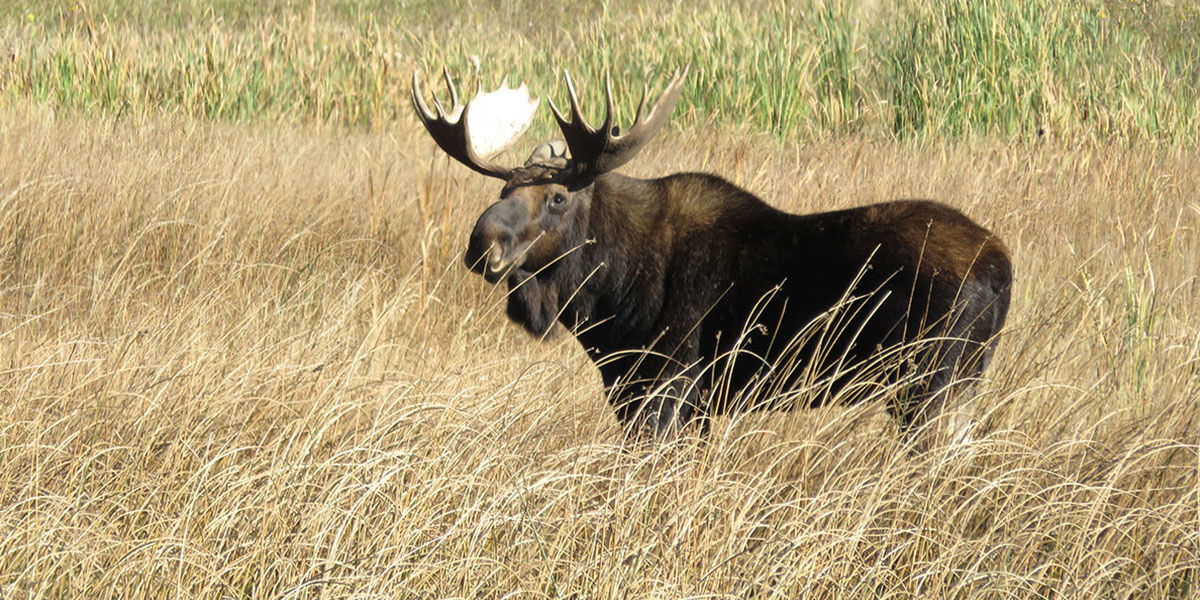

Interior Secretary Ryan Zinke is expanding or opening hunting in 30 National Wildlife Refuges, the Department of the Interior (DOI) announced Friday.
The move will open more than 251,000 acres and raise the total number of places where hunting is permitted to 377 and where fishing is permitted to 312. The expansion will be in effect in time for the 2018-2019 hunting season.
“American sportsmen and women contribute over a billion dollars a year to fund conservation. Without hunters and anglers, we wouldn’t be able to conserve wildlife and habitat; and, without access to our public lands like National Wildlife Refuges, many hunters would have nowhere to go,” Zinke said, explaining his decision.
Federal law mandates that hunting and fishing can only take place in wildlife refuges if it does not conflict with conservation, The Hill pointed out.
Refuges to be opened to certain types of hunting and fishing for the first time include Florida’s Lake Woodruff National Wildlife Refuge to turkey hunting, Illinois’ Hackmatack National Wildlife Refuge to migratory bird and game hunting, Maine and New Hampshire’s Umbagog National Wildlife Refuge to turkey hunting, Michigan’s Shiawassee National Wildlife Refuge to additional migratory bird, small game and furbearer hunting, Minnesota’s Glacial Ridge National Wildlife Refuge to some gamebird and small mammal hunting, Montana’s Swan River National Wildlife Refuge to big game hunting, New Jersey’s Edwin B. Forsythe National Wildlife Refuge to wild turkey and squirrel hunting, New Mexico’s Sevilleta National Wildlife Refuge to Eurasian-collared dove and Gambel’s quail hunting, North Dakota’s J. Clark Salyer National Wildlife Refuge and Lostwood National Wildlife Refuge to moose hunting, Ohio’s Cedar Point National Wildlife Refuge to white-tailed deer hunting, Ohio’s Ottawa National Wildlife Refuge to certain gamebird, small mammal and furbearer hunting, Pennsylvania’s John Heinz National Wildlife Refuge at Tinicum to white-tailed deer hunting and Wisconsin ‘s Trempealeau National Wildlife Refuge to certain gamebird, small mammal and furbearer hunting.
Responses in Montana to hunting expansions at the Charles M. Russell National Wildlife Refuge and the Swan River National Wildlife refuge show the range of conservationist views on the issue.
When the expansion was first proposed in May, Backcountry Hunters & Anglers Conservation Director John Gale praised Zinke’s efforts.
“Certainly refuges are a special place that provide refuge for fish and wildlife, that’s what [their] purpose is,” Gale said. “So there has to be a balance of use across the refuge spaces, and we’re glad Secretary Zinke is working with refuge managers all across the system to make sure we’re achieving that important balance, while expanding opportunities at the same time,” Gale told Montana Public Radio.
But Friends of the Wild Swan member Arlene Montgomery said the expanded hunting access was not needed in a state that had plenty of it already.
“Our refuge system should be a refuge for wildlife, and I don’t know that we should be having hunting on the refuges,” Montgomery told Montana Public Radio. “The Department of Interior needs to also recognize that there are other uses for these lands besides just hunting and fishing.”
Zinke has been criticized in the past for favoring hunting and fishing over protecting wildlife.
He promoted a proposal to allow hunting tactics described as “cruel” by conservation groups in national parks in Alaska, such as shooting bear and wolf cubs in their dens.
In August, various green groups sued the DOI over its International Wildlife Conservation Council, claiming the group broke federal law by including so many members that benefited or advocated trophy hunting, CNN reported.
Also in August, the DOI’s Fish and Wildlife Service (FWS) justified a reversal of a neonicotinoid ban in National Wildlife Refuges partly by arguing the use of the bee-harming pesticides was necessary to grow more grain favored by waterfowl prized by hunters.
However, it is also true that granting hunting and fishing permits and charging equipment fees have been a major part of how the U.S. pays for conservation, and a decline in both activities is proving challenging to wildlife agencies, NPR reported in March.
A FWS study found that the percentage of Americans who hunt has fallen by half in 50 years.
“Conservationists need to be looking at what is the next step to keep our conservation programs and places strong and healthy,” Wisconsin Nature Conservancy Director Mary Jean Huston told NPR. “Things need to evolve.”
Some ideas include new sales taxes or finding ways to monetize more currently popular outdoor activities like wildlife viewing.
Hunting and fishing advocates favored Zinke for Interior Secretary among potential front-runners because of his commitment to increasing their access to public lands, but some have also come to criticize him for recommending shrinking national monuments for fossil fuel extraction, CNN reported in 2017.
“We can have all the access we want to a concrete parking lot, but that access doesn’t mean anything if that fish and wildlife habitat isn’t there,” Backcountry Hunters & Anglers President Land Tawney told CNN.
Trump Admin. Wants to Reinstate 'Cruel' Hunting Tactics in Alaska, Conservation Groups Say https://t.co/b4Alxz3qiX @AnimalPlanet @peta @World_Wildlife
— EcoWatch (@EcoWatch) May 23, 2018

 233k
233k  41k
41k  Subscribe
Subscribe 